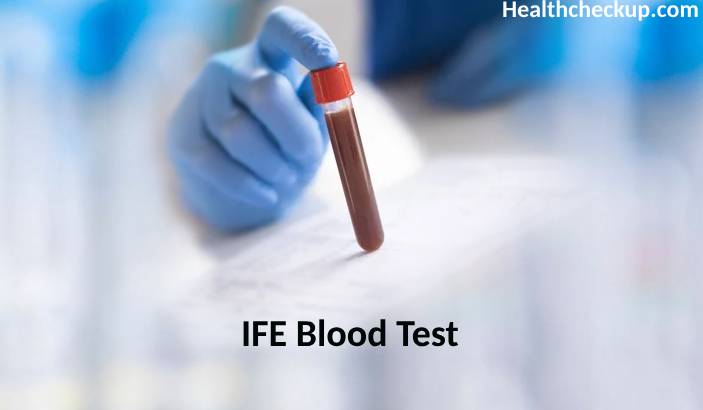Immunofixation electrophoresis (IFE) is a laboratory technique used to identify specific proteins in the blood, primarily to diagnose and monitor various types of monoclonal gammopathies, including multiple myeloma and other related diseases.
Purpose of the Immunofixation Electrophoresis (IFE) Blood Test
- Detection of Monoclonal Gammopathies: IFE is used to identify and characterize abnormal proteins, or monoclonal immunoglobulins, produced in certain diseases like multiple myeloma, Waldenström’s macroglobulinemia, and others.
- Diagnostic Clarity: Following serum protein electrophoresis (SPEP), IFE is often performed to confirm the presence and type of any monoclonal gammopathies detected.
- Monitoring Disease Progression and Treatment: In patients already diagnosed with monoclonal gammopathies, IFE can be used to monitor disease progression and the effectiveness of treatment.
Preparation for the Test
- No Fasting Required: There are generally no fasting requirements for the IFE test, making it more convenient for patients.
- Medication and Health Status: It’s essential to inform your healthcare provider about all medications you are taking, as some can affect protein levels in the blood.
- Normal Routine: Patients can usually continue their normal diet and activities before the test.
Procedure of the Immunofixation Electrophoresis (IFE) Blood Test
- Blood Sample Collection: The test involves drawing blood from a vein, typically in the arm. This is a standard procedure similar to other blood tests.
- Laboratory Processing: The blood sample is sent to the laboratory where it undergoes electrophoresis to separate the proteins by their size and charge.
- Immunofixation: Specific antibodies are then applied to the gel to identify and fix the immunoglobulins (IgG, IgA, IgM, kappa, and lambda light chains) present.
- Analysis: The results are analyzed by a pathologist or a laboratory technician to determine the presence and type of any monoclonal proteins.
IFE Normal Results
- No Monoclonal Protein Detected: Normally, no monoclonal gammopathies are identified. The presence of normal immunoglobulin bands is typically expected without any abnormal monoclonal protein spike.
- Quantitative Measurement: While IFE does not quantitatively measure the amount of monoclonal protein, its presence and type are critical diagnostic indicators.
Results Interpretation
- Negative Result: Indicates no monoclonal gammopathy is present, which is a normal finding and suggests there is no evidence of the diseases typically associated with monoclonal proteins.
- Positive Result: Indicates the presence of a monoclonal protein. The specific type of protein identified can help diagnose specific types of blood disorders.
- Further Testing: Depending on the results, additional testing, including urine tests, bone marrow biopsy, or imaging studies, may be recommended to further investigate or monitor the disease.
The Immunofixation Electrophoresis (IFE) blood test is essential for identifying monoclonal gammopathies associated with various blood disorders. This test plays a crucial role in diagnosing diseases like multiple myeloma and in monitoring treatment effectiveness or disease progression.
I specialize in writing about health, medical conditions, and healthcare, drawing extensively from scientific research. Over the course of my career, I have published widely on topics related to health, medicine, and education. My work has appeared in leading blogs and editorial columns.









